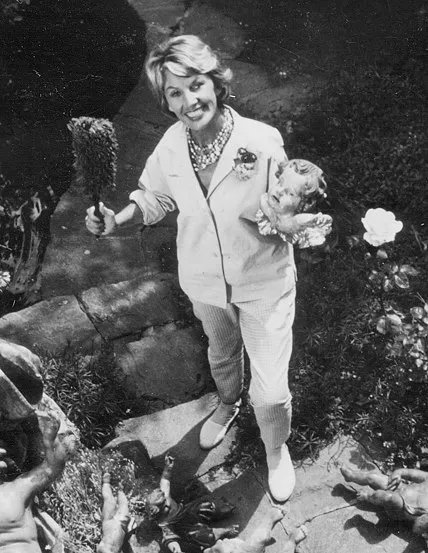
Name: Lale Andersen
Nationality: German
Occupation: Singer-songwriter
Birth Year: 1905
Death Year: 1972
1972 – Lale Andersen, German singer-songwriter (b. 1905)
Born in the idyllic coastal town of Bremerhaven, Germany, Lale Andersen entered the world in 1905. Her early years were spent enveloped by the salty air of the North Sea and the melodies of sailors’ songs, a backdrop that would deeply influence her future career. However, despite her humble beginnings, it was clear from a young age that she possessed an extraordinary gift for music.
As a teenager, Lale's passion for performance began to flourish. By 1920, she had already left her home to seek opportunities in larger cities like Hamburg and Berlin. It was in these bustling urban landscapes that she honed her craft as a singer and songwriter often performing in smoky cabarets where shadows danced alongside her melodies. Ironically, while the roaring twenties ushered in an era of artistic freedom and expression for many artists, it also presented challenges that would test Lale's resolve.
Despite this struggle, she became known for her unique blend of folk tunes with contemporary styles truly reflecting the zeitgeist of post-war Germany. In 1930, everything changed when she recorded "Lili Marleen," a haunting love song that would become synonymous with soldiers during World War II. Perhaps this song was more than just lyrics; it represented hope amidst despair and longing amidst separation a sentiment felt deeply across nations torn apart by war.
The song quickly catapulted Lale into stardom but came with its share of controversies. As the Nazi regime rose to power, they initially embraced “Lili Marleen” due to its popularity among troops; however, they later censored various aspects of her work because they viewed certain themes as too sentimental or conflicting with their propaganda efforts. Who knows how this affected Lale personally? Was she disillusioned by those who exploited her art? Or did she feel vindicated knowing her voice reached countless hearts despite political strife?
Throughout World War II and beyond, Anderson continued to navigate tumultuous waters both artistically and politically; after all... maintaining one's integrity while striving for success is no small feat! She eventually relocated to Switzerland after facing increasing pressure from German authorities over perceived anti-regime sentiments embedded within some songs.
In Switzerland a country untouched by war she found solace but not satisfaction. The silence was deafening compared to what she'd experienced before the applause echoing through crowded cabarets replaced now by whispers among friends over coffee cups at cozy cafés. Yet during these quiet moments birthed inspiration anew: Lale wrote beautifully introspective ballads reflecting on lost love and uncertainty while showcasing profound storytelling abilities rarely witnessed at that time!
The post-war era brought new life into European music scenes rock ‘n’ roll emerged alongside jazz influences infiltrating traditional European sounds! Ironically enough though: here stood our beloved chanteuse whose melancholy voice could send shivers down one’s spine even amid upbeat arrangements filled with vibrant instrumentation! With each note played since then reminding us all how fragile happiness truly is...
Early Life and Career
Andersen discovered her passion for music at a young age. She started her musical journey by learning to play the piano and singing in local venues. After moving to Berlin, she faced the challenges of the competitive music scene but eventually found her footing. Her unique style infused traditional German folk music with contemporary influences, which set her apart from her contemporaries.
Rise to Fame
In the late 1930s, Andersen recorded “Lili Marleen”, a song that would catapult her to superstardom. Originally written by Hans Leip and later set to music by Norbert Schultze, the song tells the story of a soldier who is in love with a girl named Lili Marleen. With its melancholic melody and heartfelt lyrics, it resonated deeply with soldiers and civilians alike, becoming a symbol of love and longing during wartime. The song was broadcast regularly by German military radio, solidifying Andersen’s place in the hearts of many.
Post-War Career
Even after the war, Lale Andersen continued to flourish as an artist. Her career spanned decades, with her music evolving through various styles and influences. She became prominent in the post-war cabaret scene, captivating audiences with her powerful performances and emotional storytelling. Andersen continued to release albums and perform until the late 1960s, maintaining her popularity across different generations.
Legacy and Influence
Lale Andersen passed away on August 29, 1972, in the city of Rottach-Egern, Germany. Her legacy as a pioneering female artist endures, influencing countless musicians and singers. Her song “Lili Marleen” remains a classic, and it is often revisited in cultural discussions about wartime music and its impact on morale. Even decades after her death, her contributions to music and her role in shaping German popular music continue to be celebrated.
A Legacy Carved Through Time
Lale Andersen’s music had lasting impacts not only on German popular culture but also resonated worldwide as interpretations surfaced across numerous languages over decades following WWII! Even today scholars cite instances wherein younger generations have discovered gems within catalogs released long ago... inspiring them artistically whilst exploring their own identities through timeless narratives crafted effortlessly via lyrical prowess displayed throughout albums produced during productive years spent recording both solo & collaborative works!
An Unraveling Career
The late '50s marked another turning point as younger artists sought out fresh avenues diverging far from conventional norms established previously this shift towards modernity placed renewed demands upon performers like Anderson who had once enjoyed significant acclaim yet now found themselves navigating uncharted territories unlike anything seen before! But rather than succumbing entirely... Lale began embracing newer stylistic elements woven intricately within familiar frameworks making room alongside electric guitars where previously accompanied only piano-driven arrangements existed priorly…






